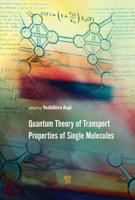Publisher's Synopsis
The role of humanitarian operations (HO) has become increasingly important in recent years owing to a rise in the number of high-impact natural disasters (Em-Dat 2016). There is a global mandate today to effectively address the impact of natural disasters (Sendai Framework UNISDR 2015). Post-disaster HO is extremely challenging because of their complexity. Each disaster presents a unique set of challenges, depending not only on the kind of natural hazard that triggers it but also on its severity and impact on different regions, societies, economic strata and political systems. In general, natural disasters bring destruction to life, personal property, economic systems, and essential infrastructure (Cassidy, 2003; Murray, 2005), and severely impact lower socioeconomic and disadvantaged groups (Jahre et al., 2007; Bergstrand et al., 2015). Additionally, they cause shortage in key supplies and resources for day-to-day living (Sullivan, 2005), disrupt transportation, communication (Wood et al., 1995) and information systems (Beamon & Fernandes, 2004; Wood et al., 1995; Tomasini & Van Wassenhove, 2004) and derail socio-cultural and political agendas (Beamon & Fernandes, 2004; Trunick, 2005; Wichmann, 1999). The assessment of demand and availability of supplies for var- ious consumables is extremely complex (Wood et al., 1995, Cassidy, 2003) because of the difficulty in predicting the timing, location and intensity of various disasters (Beamon & Fernandes, 2004; Murray, 2005; Long, 1997; Wood et al., 1995) and involvement of many types of stakeholders (Wood et al., 1995), including non-governmental organiza- tions (NGOs) during the different phases of disaster management.









